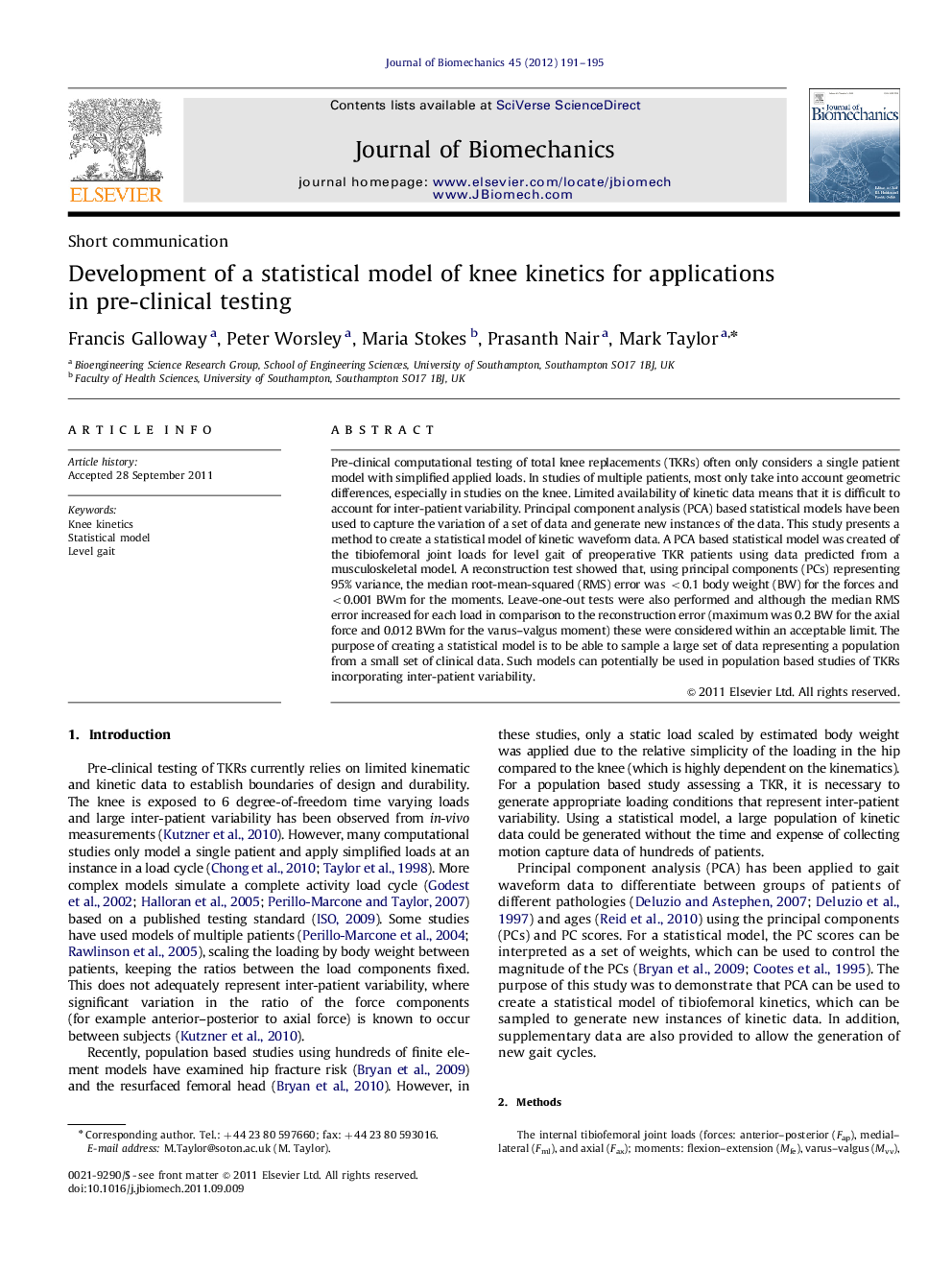| Article ID | Journal | Published Year | Pages | File Type |
|---|---|---|---|---|
| 10432553 | Journal of Biomechanics | 2012 | 5 Pages |
Abstract
Pre-clinical computational testing of total knee replacements (TKRs) often only considers a single patient model with simplified applied loads. In studies of multiple patients, most only take into account geometric differences, especially in studies on the knee. Limited availability of kinetic data means that it is difficult to account for inter-patient variability. Principal component analysis (PCA) based statistical models have been used to capture the variation of a set of data and generate new instances of the data. This study presents a method to create a statistical model of kinetic waveform data. A PCA based statistical model was created of the tibiofemoral joint loads for level gait of preoperative TKR patients using data predicted from a musculoskeletal model. A reconstruction test showed that, using principal components (PCs) representing 95% variance, the median root-mean-squared (RMS) error was <0.1 body weight (BW) for the forces and <0.001Â BWm for the moments. Leave-one-out tests were also performed and although the median RMS error increased for each load in comparison to the reconstruction error (maximum was 0.2Â BW for the axial force and 0.012Â BWm for the varus-valgus moment) these were considered within an acceptable limit. The purpose of creating a statistical model is to be able to sample a large set of data representing a population from a small set of clinical data. Such models can potentially be used in population based studies of TKRs incorporating inter-patient variability.
Keywords
Related Topics
Physical Sciences and Engineering
Engineering
Biomedical Engineering
Authors
Francis Galloway, Peter Worsley, Maria Stokes, Prasanth Nair, Mark Taylor,
